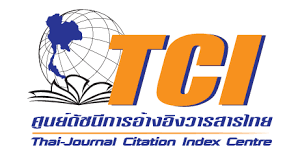A Confirmatory Skill Forensic Accounting: The Aspect of Auditor Governance.
Keywords:
Skill Forensic, Forensic, Audit PerformanceAbstract
This research was aimed to the objectives of this research study were to analyze a confirmatory forensic accounting skill: The aspect of auditor governance and to prioritize the factor. Collect data from 376 auditor government. Questionnaires were used to gather the data. The data was analyzed by a confirmatory factor analysis by Package program for statistical. Using statistical was structural equation model (SEM). The research findings showed highly significant consistency and the empirical data (Chi-Square=118.196 df= 95 P-value = 0.054 GFI = .967 RMSEA= .026, with 6 influential factors; Skill of Low: SLO, Skill of Document: SDU, Skill of Audit: SAU, Skill of Information Technology: SIT, Skill of Fraud: SFU and Skill of Communication: SCM Expected benefits from this research Primary data for regulation definition to Anti-Fraud of governmental and private organizations include push forward permit auditors government auditing skill of fraud in future.
References
เสาวนีย์ สิชฌวัฒน์. (2544). การบัญชีสืบสวน (Forensic Accounting). วารสารบริหารธุรกิจ, 90, 6-10.
ศิลปพร ศรีจั่นเพรช. (2553). มารู้จักกับการบัญชีสืบสวน. วารสารวิชาชีพบัญชี, 6(17), 22-28.
วิไล เพ็ชรประดับฟ้า. (2559). Forensic Accounting กับการตรวจสอบทรัพย์สินในคดีล้มละลาย. วารสารกรมบังคับคดี. 20(100), 3-6.
พรรณนิภา รอดวรรณะ. (2556). นิติบัญชีศาสตร์. จดหมายข่าวสภาวิชาชีพบัญชีฯ, (9), 8-10.
สมชาย ศุภธาดา. (2541). การบัญชีนิเวชศาสตร์: ถึงเวลานักบัญชีไม่อาจปฏิเสธ. วารสารนักบัญชี, (เมษายน–กรกฎาคม), 41-46.
นิอร องอาจสิทธิกุล และเสาวนีย์ สิชฌวัฒน์. (2550). การบัญชีสืบสวนในทัศนคติของผู้สอบบัญชี: การบัญชีสืบสวนในประเทศไทย. วารสารวิชาชีพบัญชี, (3)6, 66-76.
ธานินทร์ ศิลป์จารุ. (2557). การวิจัยและการวิเคราะห์ข้อมูลทางสถิติด้วย SPSS และ AMOS. (พิมพ์ครั้งที่ 15). กรุงเทพฯ: ห้างหุ้นส่วนสามัญบิสซิอาร์แอนด์ดี.
Aaker, D. A., V. Kumar & G. S. Day. (2001). Marketing Research. New York: John Wiley and Sons.
Cohen, L. and Manion, L. (1989). Research Methods in Education. 3rdedition. London: Routledge.
Doody, H. (2009). Fraud risk management: A guide to good practice. London, England: Chartered Institute of Management Accountants.
Goudie, A.W. & Stasavage, David. (1977). Corruption: The Issues. Organization for Economic Cooperation and Development (OECD). Technical, 122.
Karuna Nathalang, and Kornthong Luangvilai. (2003). Forensic Accounting: Contemporary Issue in
Thailand.Masters independent study, Faculty of Commerce and Accountancy, Thammasat University.
Larry, D. & Nicholas Apostolou. (2002). Forensic Accounting: A New Growth Area in Accounting. Ohio CPA Journal, p 16.
Michael, Johnston. (1995). The Search for Definitions: The Vitality of Politics and the Issue of Corruption. USA: Colgate University.
Nunnally, J. C. and I. H. Bernstein. (1994). Psychometric Theory. New York.
Ramamoorti, S. (2003), Chapter 1. Internal Auditing: History, Evolution, and Prospects, pp. 2- 23, in Bailey, A.D., Gramling, A.A., Ramamoorti, S. (Editors), Research Opportunities in Internal Auditing, Altamonte Springs: The Institute of Internal Auditors Research Foundation.
Sandholtz, Wayne, & Koetzle, William. (2000). Accounting for Corruption: Economic Structure, Democracy and Trade. International Studies Quarterly: Blackwell Publishing and The International Studies Association: JSTOR, 44(1), 31-50.






